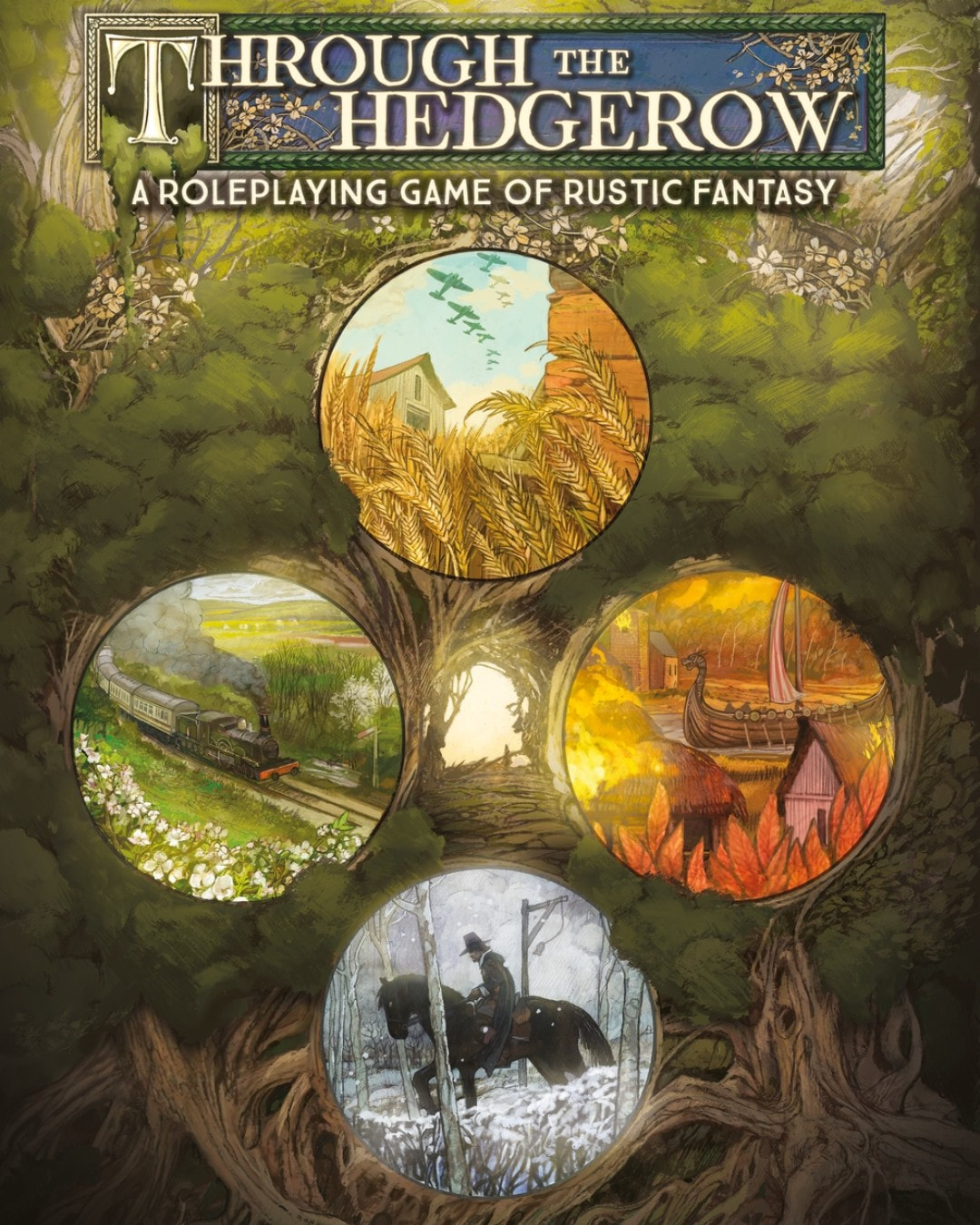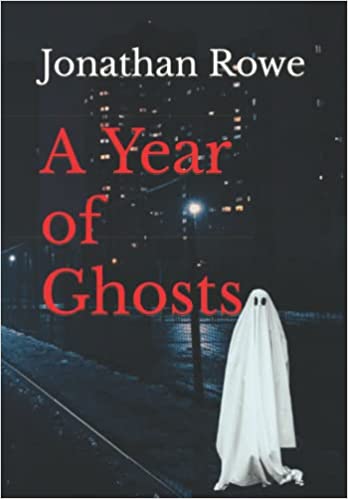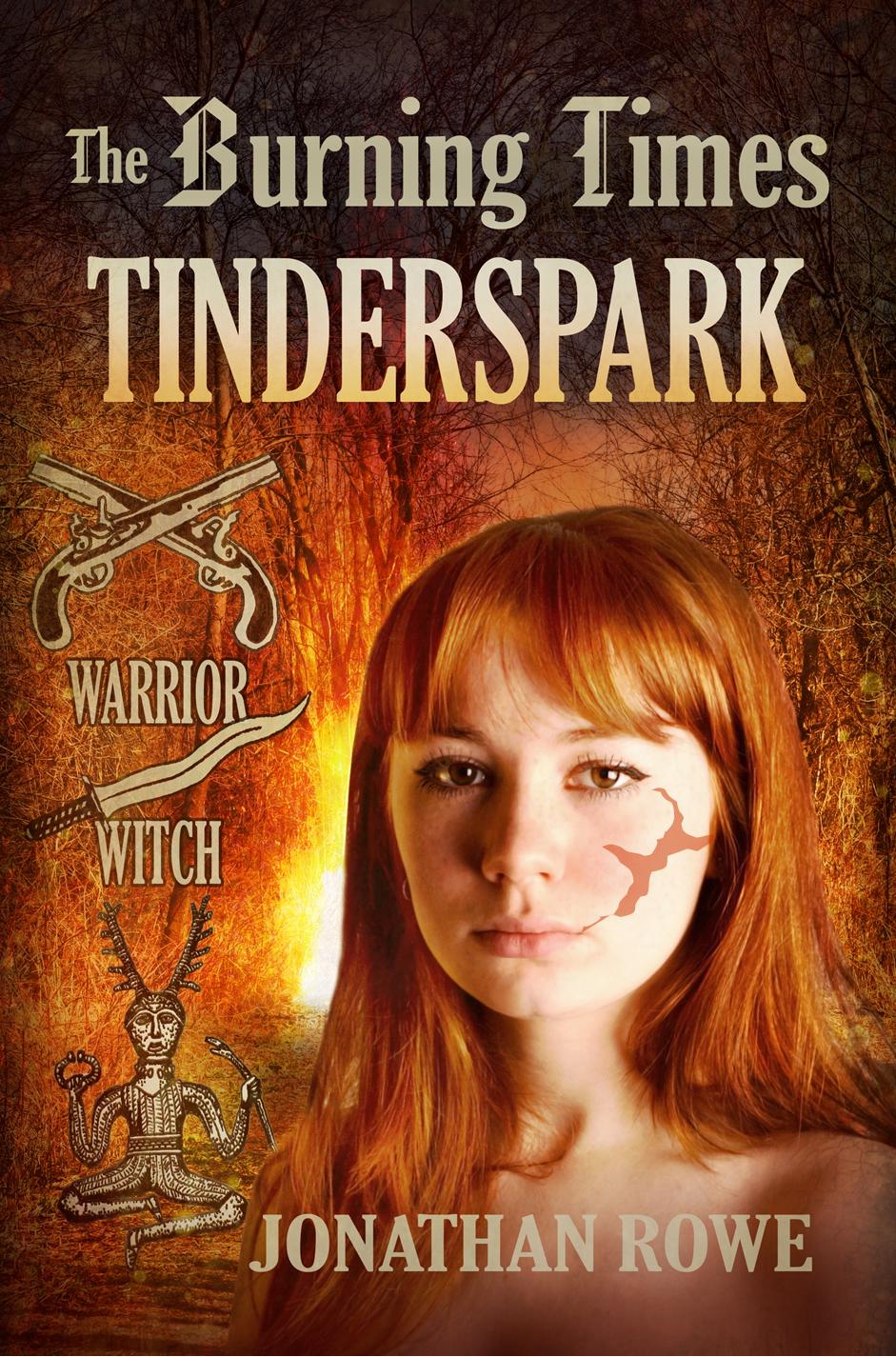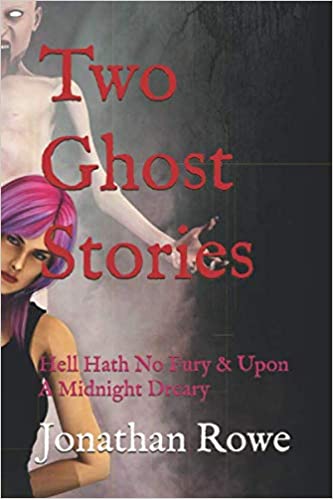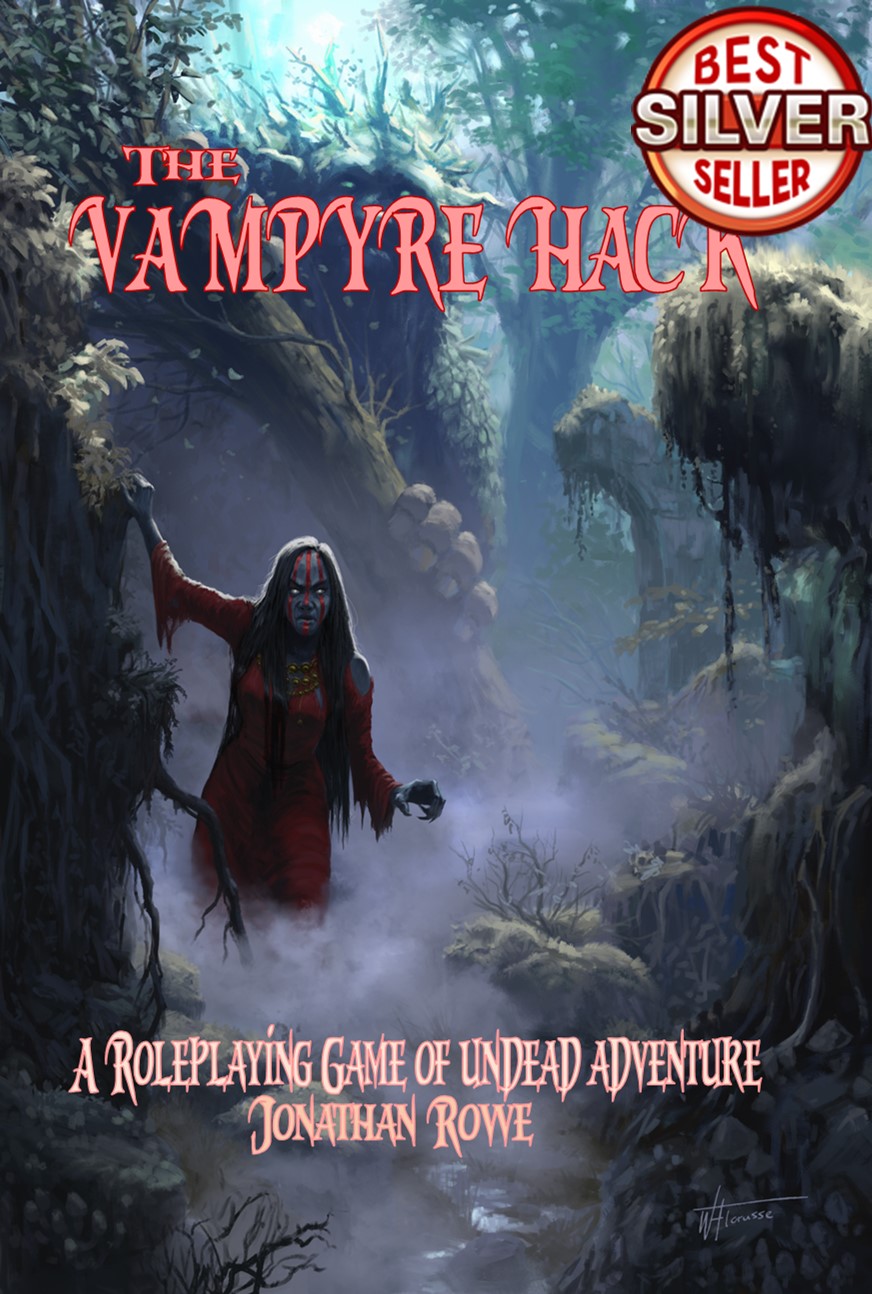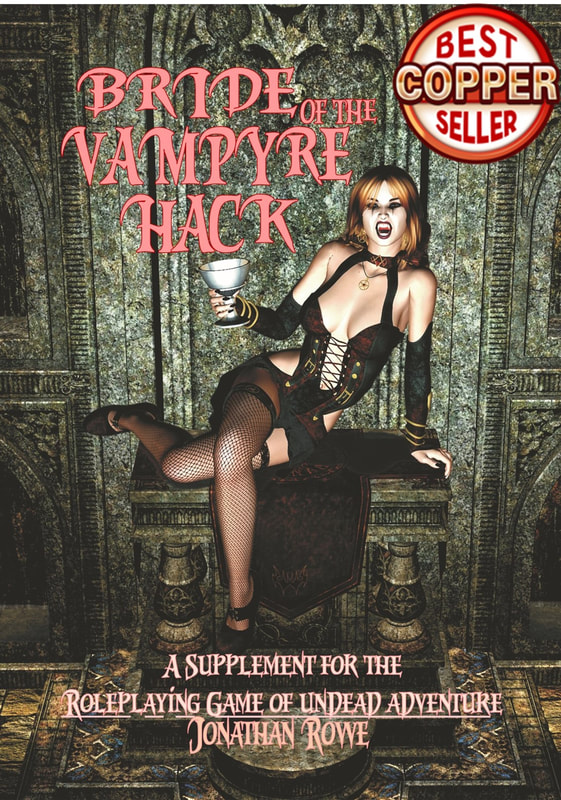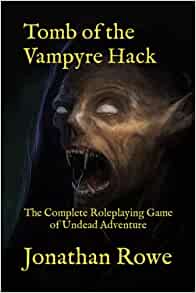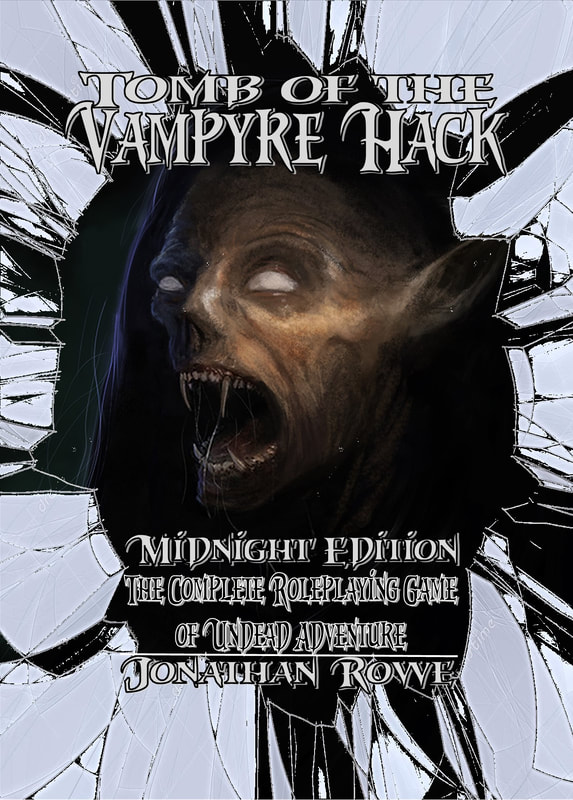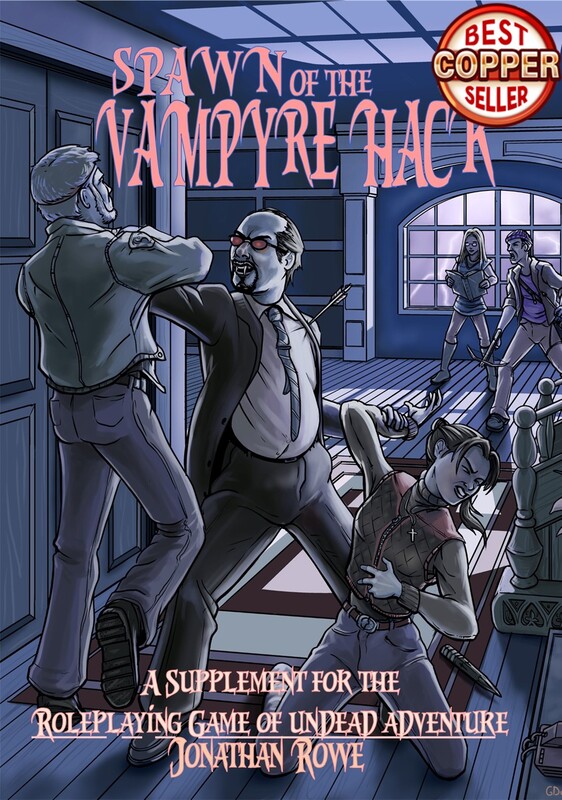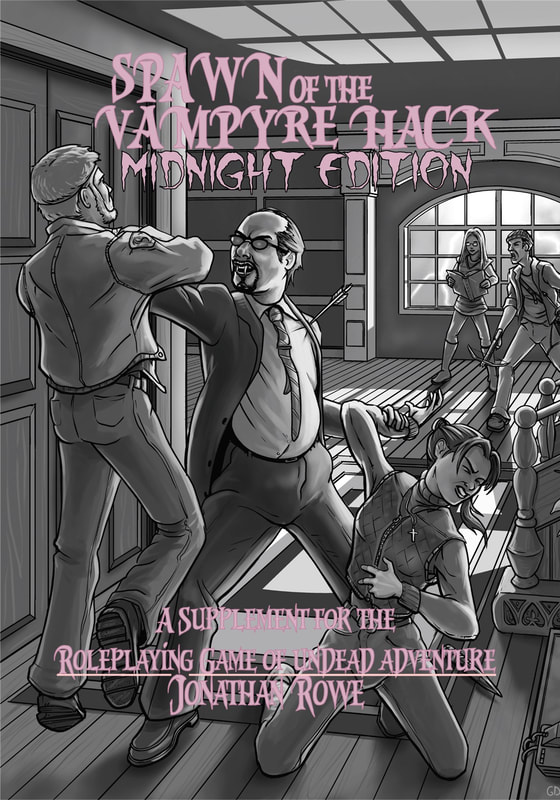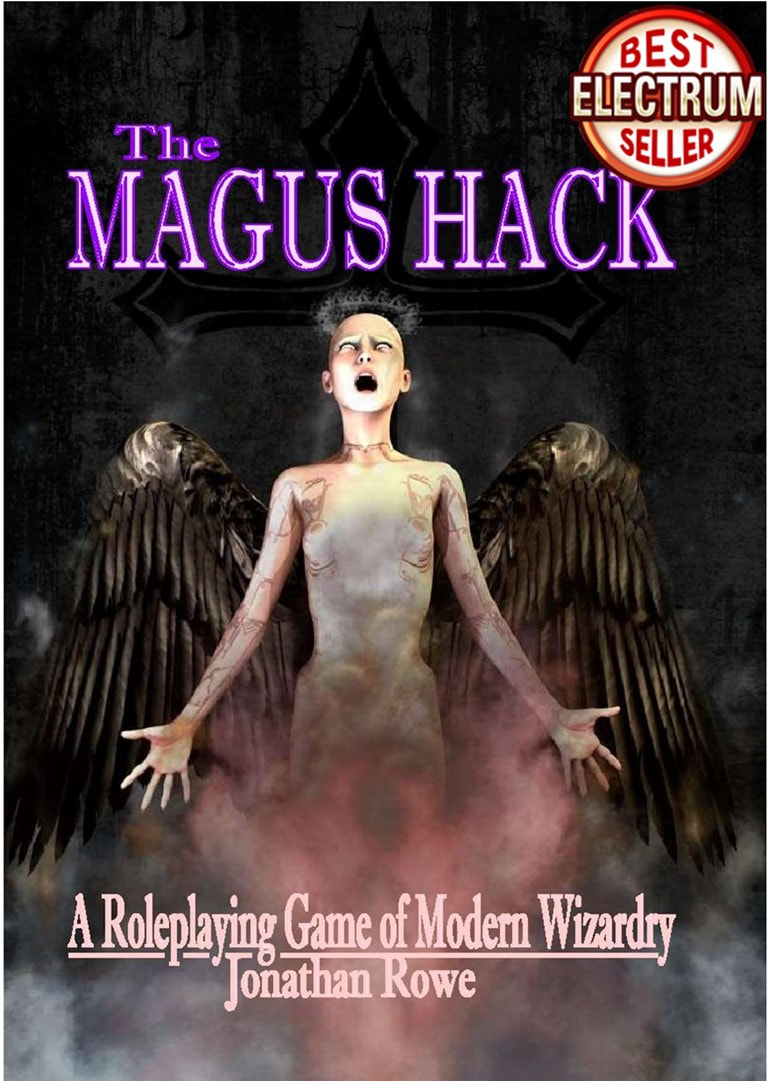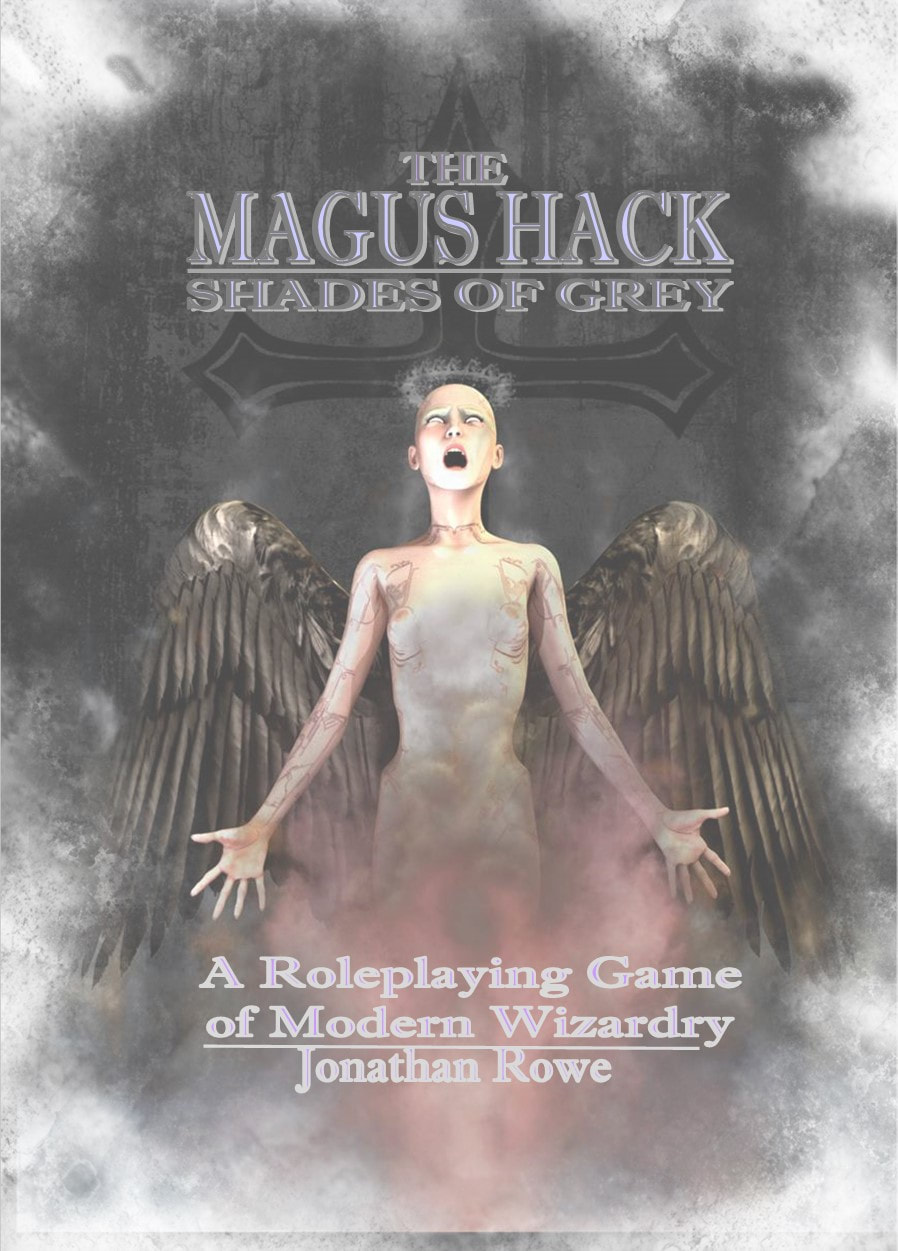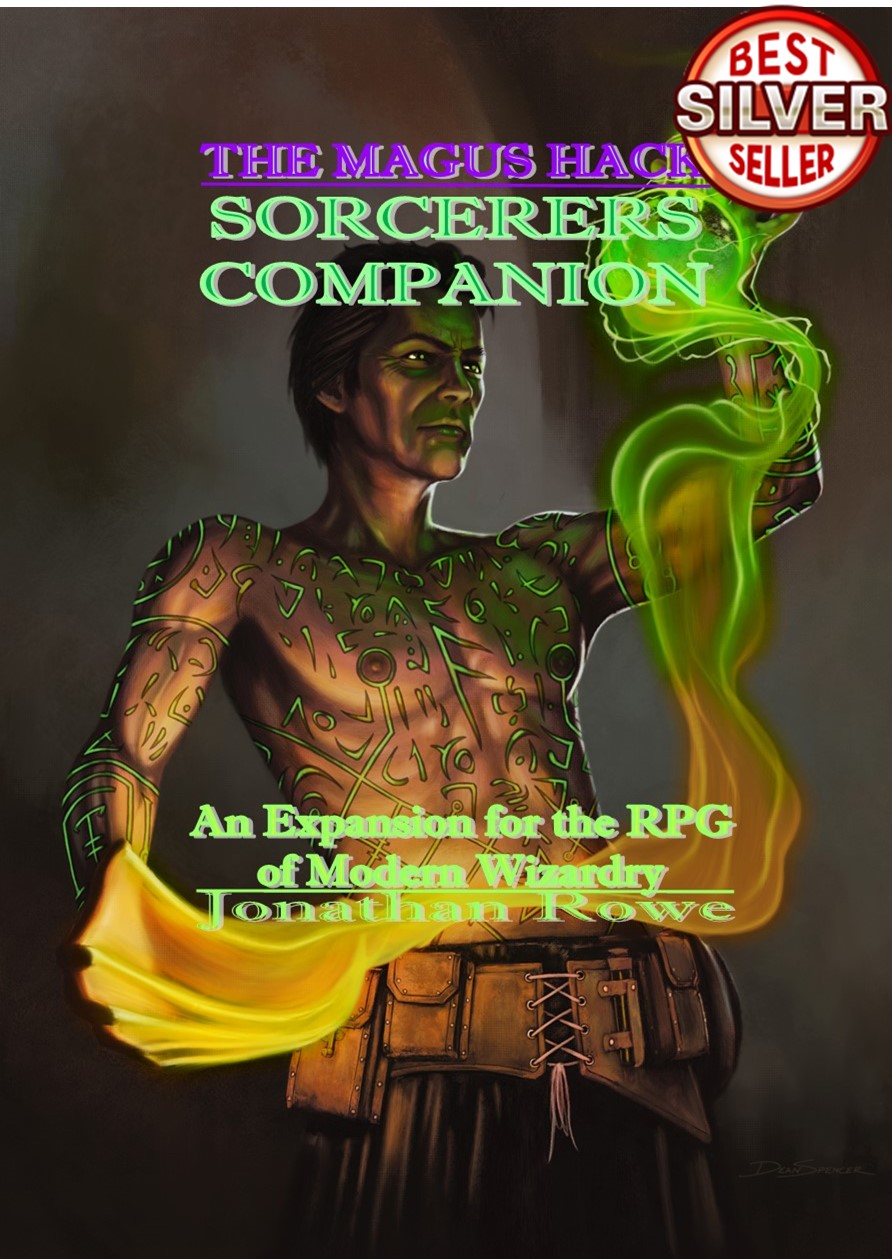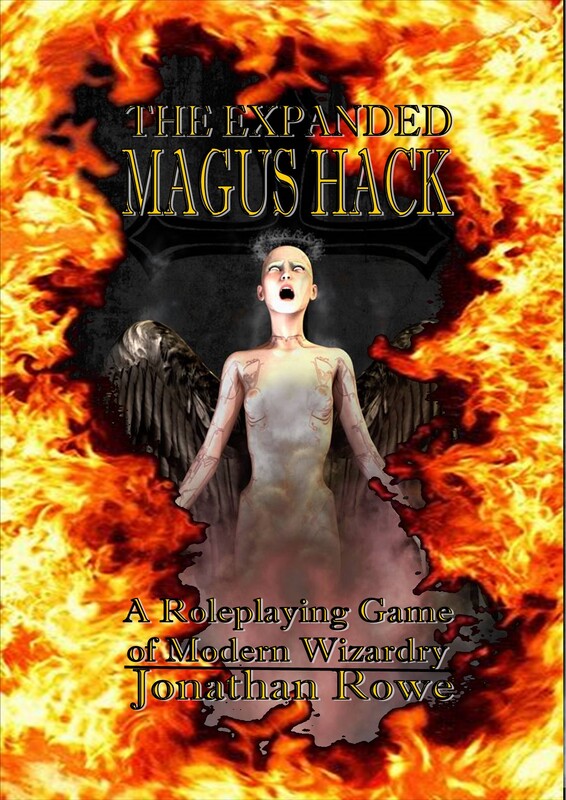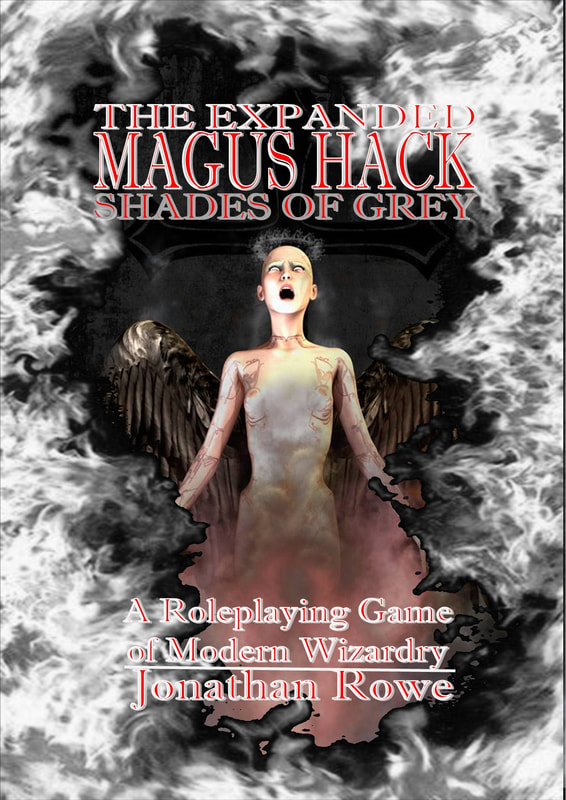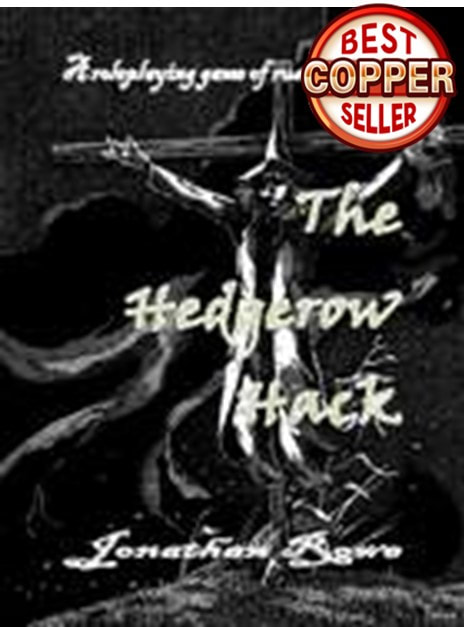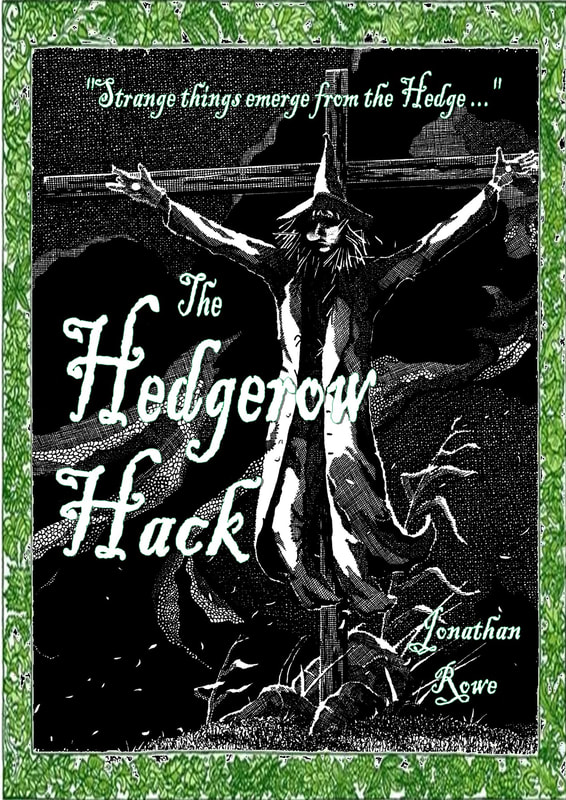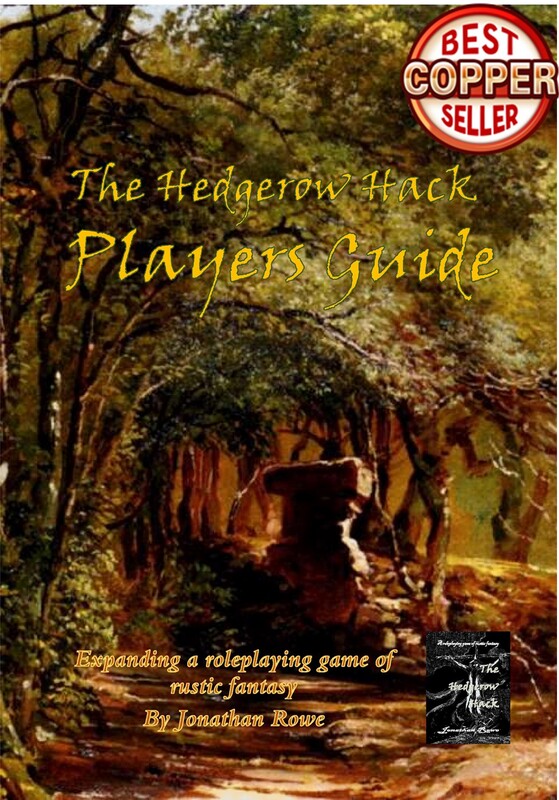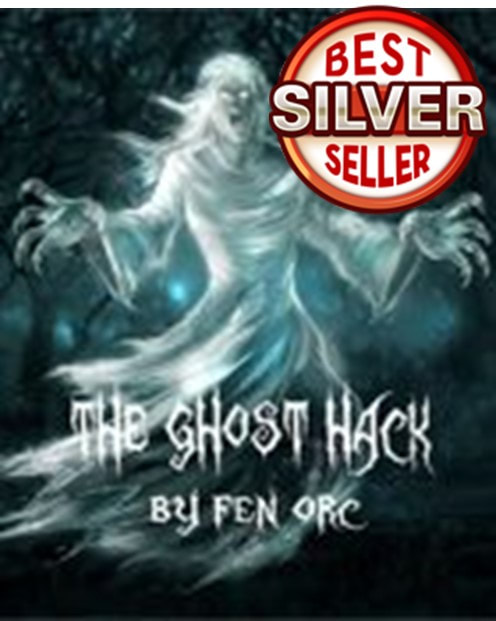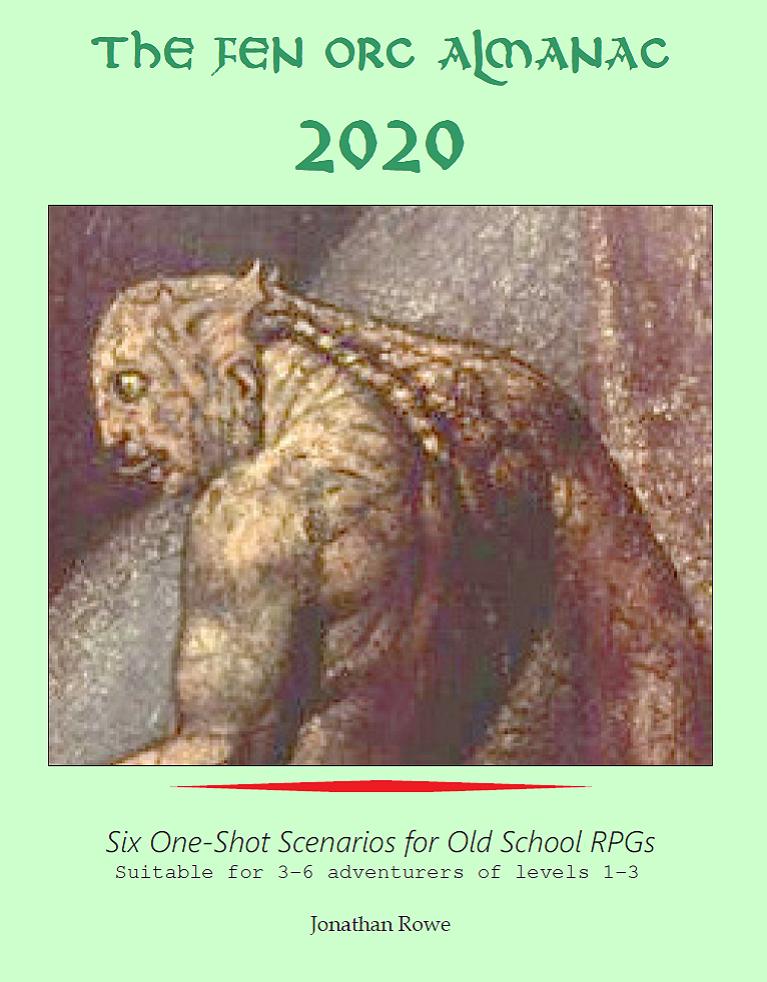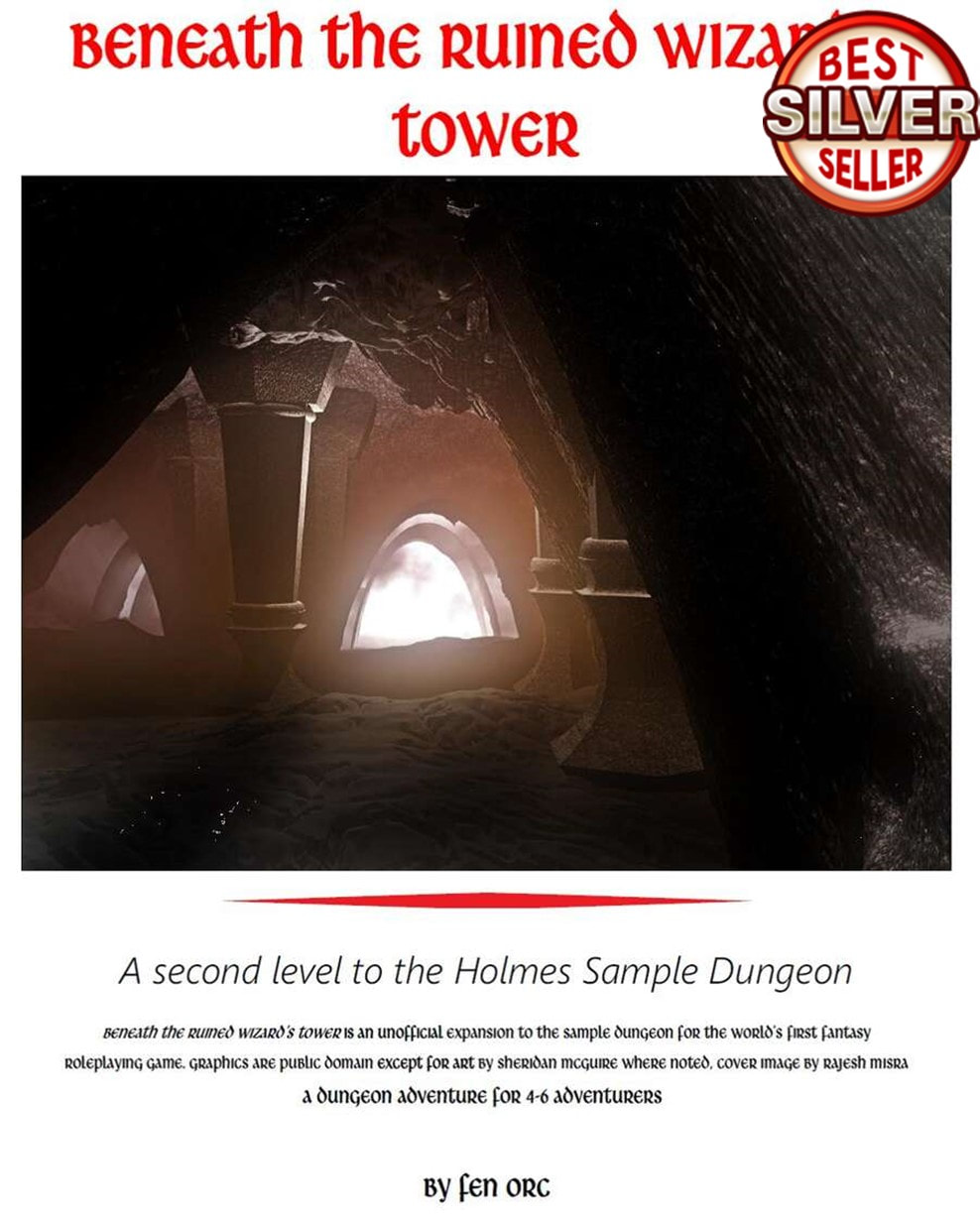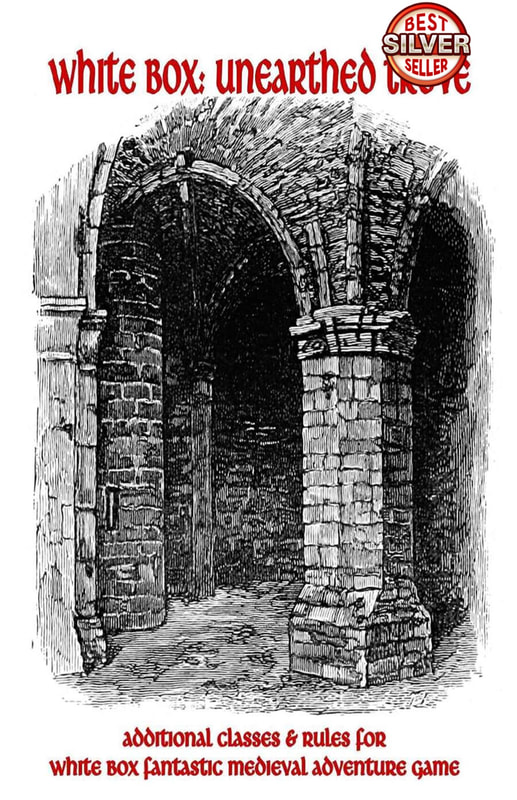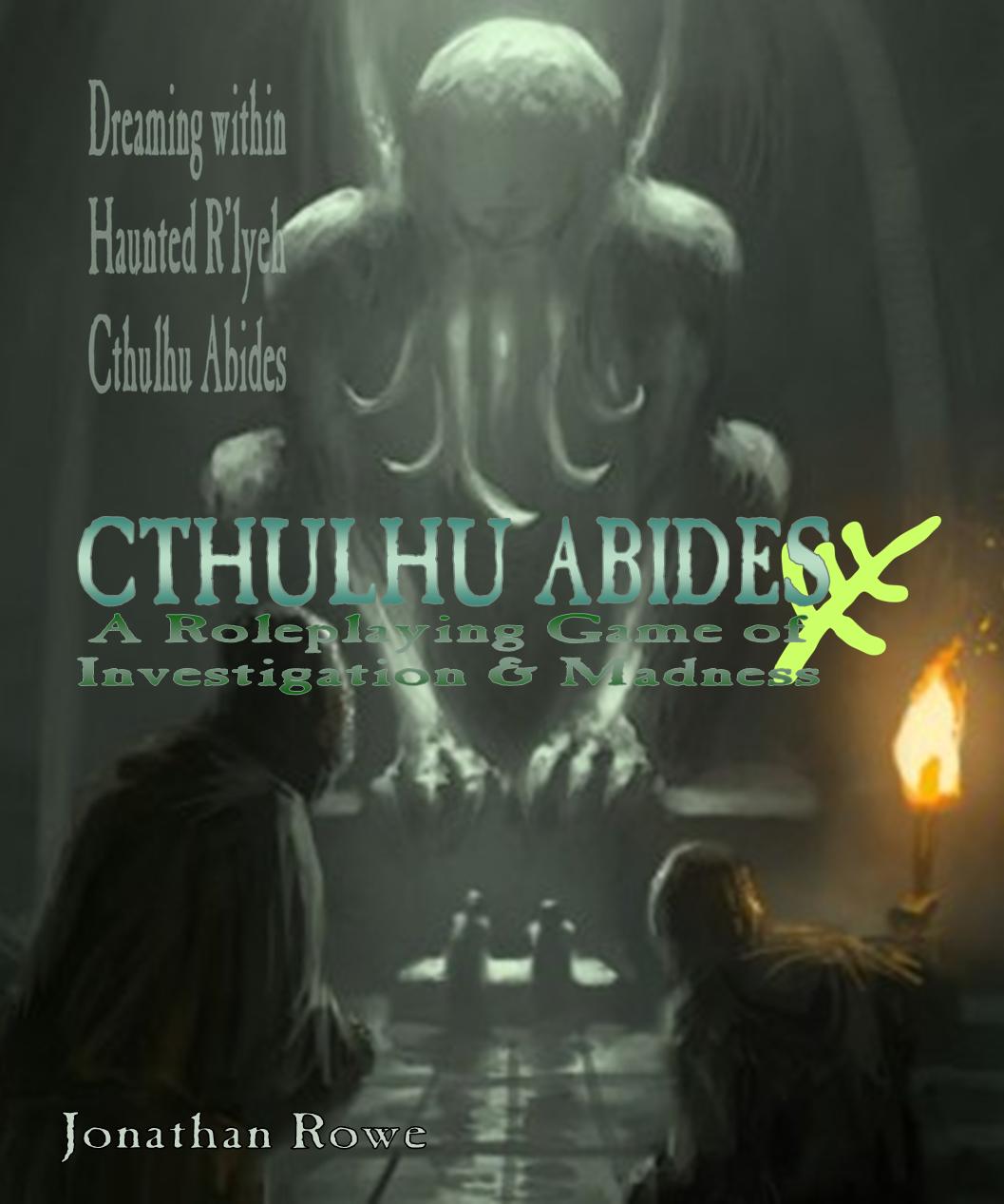|
I've been enjoying the expandable card game Vampire The Masquerade: Rivals. There will be a review to follow, but the immediate effect of the game on me and my fellow players has been to make us all want to play Vampire: the Masquerade RPG again! Ah, V:tM, how do I love thee? Well, let's count the ways. V:tM appeared in 1991. I remember discovering it in Virgin Megastore, which (rather bravely) sold RPG products on the high street back then. I was at a bit of a crossroads at that time, recently graduated and married, uncertain about my career direction, having outgrown dungeons (or so I thought back then) and distanced from the RPG crowd I had known at school and university. I was on the edge of Moving On and consigning roleplaying to the category of Dumb Stuff I Did Back In The Day. That's when I saw her. Did my heart love till now? forswear it, sight! For I ne’er saw true beauty till this night. Such an intriguing cover: rose on a cobwebbed slab, bare title, no explanation. On the back cover, just this teasing testimony: "No one holds command over me. No man. No god. No Prince. What is a claim of age for ones who are immortal? What is a claim of power for ones who defy death? Call your damnable hunt. We shall see who I drag screaming to Hell with me." -- Günter Dörn, Das Ungeheuer Darin And that was it. That was all you got. So of course, I bought it, pulled off the shrinkwrap and settled down to read. And it took me on a rollercoaster: ancient lineages, cannibalistic politics, heady romance, bleak tragedy, punk edginess. No one could read that 1st edition rulebook and not be enchanted by the world it presented. Yes, in the future the World of Darkness that this game introduced would get overcrowded, over-explained and dubiously interpreted. The warning signs were here, with indulgent pieces of fiction introducing each chapter and check-me-out music quotes from rock bands with the right haircuts all over the place. But it was so fresh and innovative, who could care? The things that V:tM introduced to popular culture can't be understated. If it didn't outright invent the tropes of undead crimelords and business moguls lording it over the neon-lit nights of modern cities from their skyrise lairs, or the immemorial war between vampires and werewolves, or younger vampires rebelling against their millennia-old sires, or the conspiracy that conceals the undead from humanity, or just different clans of vampires with different cultures and signature powers, well, it certainly presented the defining iteration of these concepts, that almost every movie and TV series picked up and ran with, going forward. And how nice it would be to go back to that source, back to what it felt like to play Vampire the way it was before they over-complicated things, before the silly one-trick Clans appeared and the Sabbat had its mystery torn away and all the other World Of Darkness games came out, resulting in campaigns where vampires adventured alongside mages and faeries and werewolves and everyone was really just a power-maxed superhero with 'Brooding' dialled up to 11. All of which is to say that, once you get the bug to go back to play V:tM like it was in the Good Old Days, you get it bad. Except for one thing. I really don't like the World of Darkness rules system. I never did like the Great Handfuls of d10s approach, or the arbitrary constellations of Skills and Talents lined up alongside 9 Abilities in 3 tiers, or everything in dumb 5-dot progressions. I really disliked the way combat worked (slow and grindy but with little opportunity to act tactically). Several of the Disciplines were broken and never got fixed to my satisfaction. Yeah, I know, there's a new ruleset out there with special 'Blood Dice' but (i) I don't want to invest in a new version because what I want to play is the original game and (ii) RPGs with bespoke dice irritate me now. Looks beautiful - but I can't be bothered I welcome Shannon Michael correcting me here - the fancy dice in Vampire v5 are cosmetic but inessential and you can play the game with a handful of ordinary d10s so long as the hunger dice are a different colour from the rest or rolled separately. Where then does that leave me... Oh, look what we have here. Matthew Skail's Blood Hack is on drivethrurpg I've already covered what I like about Matthew Skail's Blood Hack and this little OSR-style Vampire game inspired me to create some similar games of my own: the Ghost Hack and the Magus Hack. If I'm going to run a short campaign, set in the world of V:tM but using the Blood Hack's lovely rules (character classes! going up levels! 6 stats! hit points!!!), then some rules tweaks are needed to accommodate the familiar clans and V:tM's distinctive features. If you're interested in such an adaptation, read on. You'll noticed that, in order to honour some of the interesting features of Blood Hack, I've taken a few liberties with the Clans - such as giving the Tremere an aversion to holy symbols (after all, they're a bunch of medieval wizards who damned themselves to attain immortality), representing Malkavians as possessing a very specific sort of derangement and making Ventrue unusual in being able to create ghouls without using magic. The idea that each Clan has its own specific sort of Frenzy and way of restoring its Frenzy Die appeals to me. Going up levels likewise is rather different from the way advancement occurs in V:tM, so some assumptions have to be made about what justifies experienced PCs in gaining the powers of Elders and Ancients. The biggest change is the addition of a new usage die, the Frenzy Die. You roll this when your vampire is exposed to fire, sunlight or blood (if you're starving) and, as usual with Hack RPGs, it gets a size smaller if you roll certain numbers: d6 shrinks to d4 and d4 disappears altogether. Normally, usage dice shrink like this when you roll 1-2, but the Frenzy Die shrinks if you roll the two highest numbers (e.g. 5-6 on a d6). If the Frenzy Die shrinks, your vampire becomes temporarily deranged (attacking or running away). But here's the thing: each Clan now has its own Frenzy trigger and specific way of responding to that trigger. For example, Toreadors are triggered by beauty and respond by falling into rapt contemplation. Each Clan also has a Resting activity that restores the Frenzy Die to its original size. For example, Toreadors can spend an hour in unhurried contemplation of beautiful things: they don't fall into a rapture and instead refresh the Die. Brujah need half an hour of competitive activity, Tremere an hour of occult research, Gangrel some time being an animal. The problems pile up when your Frenzy Die drops to zero (i.e. a d4 exhausts and shrinks). From this point on, if a Frenzy is triggered, you roll your Morality Die instead and that's bad, because no one wants to be rolling their Morality Die in this game (as it exhausts, you lose your humanity). Blood Hack: the MasqueradeTo create vampires in the style of V:tM, ignore the Blood Hack rule that vampires do not create reflections. Instead of the four classes in BH, use the Clans below. Two new Dice are used with this ruleset. The Frenzy Die The Frenzy Die as a d6 and increases by one size at 4th, 7th, 9th and 10th level. The Frenzy Die permanently shrinks by one size the first time a vampire’s Morality Die grows to d10, d12 and d20; if this would shrink the Frenzy Die below d4, increase the Morality Die by one size instead. The Frenzy Die is rolled under special circumstances for each Clan. However, all vampires must roll the Frenzy Die if they are exposed to fire or sunlight or if they are exposed to blood when their Blood Die is zero. If the Frenzy Die rolls its highest two numbers, it exhausts (temporarily gets one size smaller) and the vampire is briefly deranged: if exposed to blood, they become ravening and must feed, attacking if necessary; exposure to fire/sunlight means they become craven and flee. The Frenzy Die is restored by a day’s rest. It is refreshed once per night if a vampire engages in a Clan-specific restful activity. If the Frenzy Die is at zero, the vampire must instead make Morality rolls to resist Frenzy. Frenzy rolls now replace WIS rolls required by your Morality Die. The Wealth Die When the vampire makes a purchase, that’s more than pocket change, roll the Wealth Die. A 1-2 means they make the purchase, but they’ve depleted their reserves. Special purchases might require 2 or 3 rolls. Losing the final d4 means they’re out of cash or credit. At the end of any adventure where a character depleted their Wealth to zero, have them make a roll with their base Wealth Die. On a 1-2, their Wealth Die is treated as one size smaller for the next adventure. You might create a non-standard PC, like a millionaire Nosferatu or a dead-broke Ventrue. A simple fix is to adjust the Hit Die size up or down one to increase or decrease the Wealth Die. BrujahClan Brujah are rebels and warriors, both in life and undeath. The Clan founders were philosophers who questioned the nature of society and reality and modern Brujah delight in conflict and change. Starting HP: d10+4 HP Per Level: 1d10 Weapons & Armour: Any and all Attack Damage: 1d8/1d6 unarmed Frenzy: when insulted or frustrated, Brujah become ravening and attack with Advantage for a number of Moments equal to the Frenzy Die roll; rest by spending a half hour engaged in a competitive activity (sport, chess, debating, hunting, etc.). Wealth Die: d6 Special Features: Gain +1 to their starting STR and DEX. Brujah are effective warriors while Frenzying (as above) and benefit from Resilience of 3 in this state (in addition to any Resilience they possess normally). Brujah are potent, regardless of their mortal strength. They possess Might of 1d6 at start. Brujah are immensely intimidating. On a successful STR Test they can cause crowds of Mortals to part for them and make way. This enables them to run through crowds and also makes guards and sentries give way to them, but this test is at Disadvantage for guards who are Thralls. Weakness: Brujah are prone to Frenzy and this occurs when the Frenzy Die rolls its highest three (rather than two) scores; e.g. 4, 5 or 6 on a d6 and 2, 3 or 4 on a d4. Leveling Up: Roll to see if stats increase, roll twice for STR and DEX. GangrelThe vampires of Clan Gangrel are shapeshifters who dwell in the wilds. They claim kinship with Roma travellers and some maintain (uneasy) truces with the feral Lupines. Starting HP: d8+4 HP Per Level: 1d8 Weapons & Armour: Any, no heavy armour Attack Damage: 1d8/1d6 unarmed Frenzy: when in the presence of their totem animals; Gangrel revert to animal behaviour (and Totem Shape, if possible) for a number of Moments equal to the Frenzy Die roll; rest by spending half an hour in Totem Form engaged in ordinary animal behaviour (e.g. hunting, nesting, marking territory). Wealth Die: d4 Special Features: Gain a +1 to their starting CON and WIS. Gangrel roll all WIS tests with Advantage when hunting prey, following tracks, or otherwise surviving in the wilderness. Gangrel can change into a Totem Shape. This allows them to either turn into a small, fast animal (or one that can fly) such as black cat or bat, or they can take a large, deadly animal form such as a wolf or mountain lion. In a small form, they are fast. When in doubt, a small animal form can always move further than any other class. Initiative is rolled with Advantage, and they need one less move to get to a given range in combat. In deadly form they add +1 damage per level to their unarmed damage roll. They can transform into their Totem Shape once a night for free. Each subsequent transformation calls for a Blood Usage Die roll. Gangrel begin the game with a single small form and a single large form. Gangrel are resilient and possess 3 points of Resilience at start. Weakness: Every time a Gangrel Frenzies they grow an animal feature. The number of features is adding to any CHA Test that isn’t based on terror. Leveling Up: Roll to see if stats increase, roll twice for CON and WIS. MalkavianClan Malkavian are vampiric tricksters, prophets and fools. Their bloodline is blessed (or cursed) with madness. Starting HP: d8+4 HP Per Level: 1d8 Weapons & Armour: any Attack Damage: 1d8/1d6 unarmed Frenzy: when a non-dominant persona takes over; Malkavians enter a Fugue state (wandering off, forgetting about the current activity, ignoring friends) for a number of Moments equal to the Frenzy Die roll (or an Hour if this is due to being OofA); rest includes spending an hour pursuing the interest or agenda of a non-dominant persona Wealth Die: d6 Special Features: Gain a +1 to their starting WIS and INT. Malkavians start play with the Lesser Dementation Blood Gift. Each Malkavian has a divided personality, starting with 4 personas of which one is Dominant. At the start of each night, a randomly determined persona is in charge. You may choose to have the Dominant Persona in charge by passing a WIS test. If the PC is Out of Action (OofA) as a result of non-Killing Damage, they recover on 1d4 HP with no other penalty and a random persona takes charge (make a WIS test at Disadvantage to make the Dominant Persona in charge). While the Dominant Persona is in charge, you may invite any other Persona to take over (but not the other way round). Personas may perceive themselves to be of different ages, races, genders and backgrounds but share the same Stats and Blood Usage Die; they have their own Morality Die (when asleep, they obey the Morality Die of the Dominant Persona) The personas are aware of each other and have access to (but don't necessarily take any interest in) each other's memories and experiences. If persona and physiology do not match (a young girl in the body of an old man), costume and make-up can make a persona convincing to onlookers on a successful INT test (at Disadvantage in extreme cases like an adult and a small child). Blood Gifts are usable by all the personas. However, each persona other than the Dominant Persona has an extra Blood Gift of their own that the other personas do not. At 4th level, gain 2 more personas (both with d6 Morality); you may change who the Dominant Persona is. All personas except the Dominant Persona gain an extra Greater Gift of their own. At 8th level, gain 2 more personas (d6 Morality) and may change who the Dominant Persona is. All personas except the Dominant Persona gain an extra Elder Gift of their own. Integrating Personas: A PC might be able to integrate two personas into a new combined persona that has access to the Gifts of both and uses a single Morality Die. Weakness: Each persona has a trigger that causes it to take over – each trigger only occurs once per adventure. Leveling Up: Roll to see if stats increase, roll twice for WIS and INT. Dementation Lesser Dementation: By talking to a victim and making a successful WIS Test, the Malkavian causes the victim to experience hallucinations for a number of Minutes equal to the WIS test roll. The Malkavian gains Advantage on any further actions against the victim and can usually feed on them without the victim realising what is happening. This is at Disadvantage when used against other vampires and does not work at all against Malkavians or vampires who are Frenzied. Greater Dementation: By plumbing her own madness, a Malkavian can interpret patterns in the world that others miss. The Malkavian gains a clue that is appropriate to the adventure, such as the location of a vampire’s Haven or the identity of a traitor. The Malkavian must then make a Frenzy roll to see if a different persona takes over. Elder Dementation: The Malkavian must make a Frenzy roll to broadcast their own madness, causing all Mortals and vampires in earshot to enter Frenzy: Mortals become psychotic while vampires act according to the Clan Frenzy. NosferatuThe hideous Nosferatu are outcasts in vampire society, but their talent for secrecy makes them valuable as spies and information brokers. Despite their monstrous features, many are courteous and humane. Starting HP: d10+4 HP Per Level: 1d10 Weapons & Armour: Any weapons, medium armour Attack Damage: 1d8/1d6 unarmed Frenzy: when confronted by their reflection or filmed image; Nosferatu become craven and for a number of Moments equal to the Frenzy Die roll; rest by spending an hour in the polite company of other Nosferatu (or civilised vampires who do not mind their appearance) – this time must be spent in unhurried conversation or leisure activity, like playing chess or reading books Wealth Die: d4 Special Features: Gain +1 to their starting CON and WIS. Nosferatu are resilient and start with 3 points of Resilience. They also start with Beast Voice. Every Nosferatu enjoys the power of Shadowiness and becomes invisible if they stand still behind even the most minimal cover or in shadows. If they wish to move, they are still unnoticed if they succeed on a WIS test – but this is at Disadvantage if any onlooker has Supernatural Senses. The humanity of Nosferatu means they start with a d4 Morality Die. Weakness: Nosferatu are hideous; Mortals react with terror and either flee or attack and even other vampires are uncomfortable around them; CHA Tests that aren’t based on terror automatically fail against Mortals who behold Nosferatu and are at Disadvantage with vampires or with Mortals who cannot see the Nosferatu. Leveling Up: Roll to see if stats increase, roll twice for CON and WIS. ToreadorThe ancient Toreador Clan delight in humanity and use their immortality to savour beauty and pleasure. They can be patrons of the arts or else degenerates who seek beauty in suffering and death. Starting HP: d6+4 HP Per Level: 1d6 Weapons & Armour: Any weapons, medium armour Attack Damage: 1d6/1d4 unarmed Frenzy: when they behold something beautiful, Toreador become entranced for a number of Moments equal to the Frenzy Die roll; rest by spending an hour contemplating beautiful things in an unhurried way (no need to roll) Wealth Die: d8 Special Features: Gain +1 to their starting CHA and DEX. Toreador roll CHA tests with Advantage when interacting with mortals. This means that even the more monstrous Toreador still possess some ability to interact normally with humans (Advantage cancels Disadvantage as usual). Toreador can Mesmerize a target by glancing into their eyes. This requires a CHA check and if successful, the target can do nothing but gaze at the Toreador so long as they hold the gaze. The Toreador can use this to immediately feed on a victim without another roll. If they use the delay to attack the target, they automatically gain Initiative and they attack with Advantage. When a Toreador feeds on a target during a passionate encounter, they gain 2 Blood Usage Die steps for each one they take. Weakness: Each Toreador must choose a type of Beauty they are susceptible to (art, music, sexuality, natural world, architecture, pain, death, etc.); when they Frenzy because of this sort of Beauty they are entranced for an hour. Leveling Up: Roll to see if stats increase, roll twice for CHA and DEX. TremereThe Tremere is an order of wizards who became vampires through a magical ritual. Some time in the Middle Ages, they consumed a vampire Ancient, acquiring its powers and earning their status as a Clan. Starting HP: d6+4 HP Per Level: 1d6 Weapons & Armour: Light weapons only, light armour only Attack Damage: 1d6/1d4 unarmed Frenzy: when presented with holy symbols; Tremere become craven and flee for a number of Moments equal to the Frenzy Die roll (most Tremere are vulnerable to the symbols of Christianity but some react to other religions); rest by studying magic (performing rituals, reading spell books, etc) for an hour Wealth Die: d6 Special Features: Gain a +1 to their starting CHA and INT. When casting Blood Rituals, a Tremere may use CHA or INT to determine whether they succeed at spell casting. Tremere can cast their level of rituals a night without a need for Blood Usage Die roll (so a sixth level Tremere could cast two level 3 rituals without spending any blood). Roll with Advantage on INT to avoid the hostile effects of blood rituals. Tremere begin the game with 1d6+2 levels worth of blood rituals known. Weakness: Tremere are Thralls to their Clan and must make a CHA Test at Disadvantage to disobey the Clan’s rules or instructions. Leveling Up: Roll to see if stats increase, roll twice for CHA and INT. VentrueClan Ventrue are aristocrats and rulers, both in life and undeath. The Clan founded the Camarilla and masterminded the Masquerade. Starting HP: d6+4 HP Per Level: 1d6 Weapons & Armour: Medium weapons only, medium armour only Attack Damage: 1d8/1d6 unarmed Frenzy: when disrespected or ignored; Ventrue are compelled to rant about their pedigree, ancestry, accomplishments and/or influence for a number of Moments equal to the Frenzy Die roll; rest by spending an hour contemplating symbols of their ranks (ancestral home, coats of arms, portraits, stock portfolios, genealogies or even the company of their Mortal descendants) Wealth Die: d10 Special Features: Gain +1 to their starting STR and CHA. Ventrue roll all CHA tests with Advantage when interacting with other vampires. Once per hour, a Ventrue may drink a swallow of blood and heal themselves of 1d8 points of damage. The blood of a Ventrue turns Mortals into addicted Thralls: when they feed a Blood Usage roll worth of blood, the mortal will obey any commands the vampire gives them for the next month. Mortal NPCs gain a HD while under the effect of this. This does not work on Mortals who are already Thralls. Weakness: Ventrue can only drink Blood from Mortals with a specific characteristic (e.g. one sex, racial type, distinctive features, occupation or ancestry) Leveling Up: Roll to see if stats increase, roll twice for STR and CHA. Additional RulesGenerations Generations are not a feature of the BH rules but are important in the V:tM setting. It’s not necessary to record a vampire’s exact generation, just the Generational Division they belong to.
In place of acquiring a Lesser Blood Gift, a vampire PC can declare themselves to be of Potent Blood, making it possible for them to advance to the next Generational Division when they reach 4th level; in place of a Greater Blood Gift, they can be of Elder Blood and are allowed to advance to 7th level when the time comes; instead of taking an Elder Gift, they can claim Ancient Blood and unlock the possibility of advancing to 10th level. The in-game explanation for this could involve discovering more about your true vampire heritage, secret diablerie or receiving blood donations from a more powerful sponsor.
Diablerie allows a vampire PC to go up one level and, if this would take the PC up to a new Generational Division, no Blood Gift needs to be sacrificed. Ghouls, Thralls, Sires, Blood Bonds and Diablerie In BH, ‘ghouls’ are Thralls (ghouls) created through Blood Rites. However, Ventrue vampires can create Thralls even without a Ritual. The GM might allow other vampires to acquire a Lesser Blood Gift that enables them to do this too. In V:tM any vampire can ‘embrace’ a person to create a new vampire. BH doesn’t specify how vampires are created. This ruleset treats embracing a new vampire as something that must be learned rather than an innate vampiric ability. The Embrace is a Lesser Blood Gift that turns a bloodless and recently deceased Mortal into a vampire, through the automatic exhausting of the sire’s Blood Usage Die. The Rite of Damnation is a 2nd level Blood Ritual that is used by the Tremere to create a vampire. The Blood Bond is an enduring enslavement that occurs after consuming another vampire’s blood for the third time. In BH terms, the enslaved Thrall must make a CHA test at Disadvantage to act against their master’s wishes or interests (or pass a CHA test with Advantage to make a NPC Thrall act in this way) and it is absolutely impossible for the Thrall to attack or use powers against the Master. Diablerie is consuming a helpless (or OofA) vampire. This requires a series of STR tests; each success reduces the victim’s Blood Usage Die by one step. Once the Blood Usage Die is zero, a final test at Disadvantage is required to consume the victim’s essence; if successful the victim is destroyed and the consumer goes up a level – assuming that the victim was from an earlier Generational Division.
0 Comments
Remember Vampire: the Masquerade? Mark Rein-Hagen's broody vamp RPG crashed into the hobby in 1991 and changed everything. It established White Wolf as a major gaming industry name and their Storyteller System as an influential rules set. It opened the World of Darkness as a compelling modern day setting, with contemporary heroes exploring a 'Gothic Punk' version of the world we know, one where supernatural evils manipulate humanity from the shadows. Perhaps most importantly, it offered a radical approach to roleplaying, with anguished characters possessing vivid inner lives, a focus on themes over action and a sort of bruised romanticism that hooked players at once. In Vampire, you play the monster, but you are horrified by what you have become and what you might turn into. I was drawn in by V:tM's coffee-table chic. So minimalist. So teasing. The 1st edition cover gave nothing away beyond "A Storytelling Game of Personal Horror" Vampire presented us a world familiar from much-loved '80s media - the American heartlands of Indiana, Illinois, Wisconsin, the world of Ferris Bueller, The Breakfast Club, the music of John Cougar Mellancamp and Bob Seger, the Blues Brothers, Halloween. Then it flipped it, focusing on the decaying industrial 'Rust Belt' and the hollowed-out cities. The mythology of feuding clans and warring sects, the historical revisionism that placed undead puppet-masters behind civilisation's great events, the concept of a 'Masquerade' that exposed the wholesome suburbia of a John Hughes movie to be a cynical lie... That's a heady cocktail. Vampire and its successor-games (werewolves, mages, wraiths and changelings) pretty much defined '90s roleplaying. Gone were the gritty, matrix-dominated high fantasy worlds of the '80s - take that, Rolemaster! - and in came improvisation, drama, roll-the-dice-then-make-something-up. Light candles! Play a Dead Can Dance CD! Wear a funny hat! Vampire didn't birth LARPing but it gave it focus and White Wolf threw itself behind the LARP trend with its 'Minds Eye Theater' line. LARPers. Crikey! I loved Vampire as much as anyone. It probably sustained my post-university interest in roleplaying which would have faded away otherwise, under the squeeze from career and family and ennui with dungeons and, I suppose, dragons. The great thing about Vampire was that the scenarios wrote themselves. Session One, you awaken as a vampire and you have to go and find food. From this premise, everything else flows and the tragedies, misadventures and dilemmas of that first night on the prowl set everything else in motion. You have to hide a body. You've offended another vampire. You've been discovered by your boyfriend. You've been introduced to the vampiric Prince and he wants you to do a little job for him. It wasn't perfect though. The Great Handfuls Of Dice (GHOD) offered a cluttered and blunt mechanic that didn't allow meaningful assessment of risk. No matter how many editions the game went through, they couldn't fix overpowered Celerity or underpowered guns. Roll all these and tell me if you hit... New Clans and Bloodlines were twinky and power-creeping and, from a 21st century perspective, insensitive in the representation of race and culture (so... Gypsies vampires are all thieves and the only two black factions are devoted to murder and demonism?). The representation of Middle Eastern vampires as a clan of fanatical assassins... problematic! And of course, that intoxicating lore which was such a springboard for the imagination back in '91 got codified, nailed down, explicated and quantified. It became a straightjacket, with its canonical timelines and dominating conflicts. Although a supplement exploring the anti-human Sabbat sect was extremely imaginative, it took the Jungian 'Shadow' of Vampire and gave it a face and the night lost its mystery as a result. There's a new version of Vampire: the Masquerade out - 2018's 'fifth edition' - and it's supposed to be very good. It takes a root-and-branch approach, restructuring the (terrible) dice system and Year Zero-ing the convoluted mythology. It can't overcome the game's '90s legacy, it seems, and has encoded characters with neo-Nazi iconography. Edge-lordery or Ass-holery? I can't comment. I've not read it. The reason I'm not wading back into Vampire: the Masquerade is that I've discovered The Blood Hack. I can buy the new 5th edition for £18 as a PDF - which is good value for a slick product - or The Blood Hack for £3 from drivethrurpg Author Matthew Skail describes The Blood Hack as "a love letter to dark games of the 90's that allow you to play the monster!" So we know what he's talking about, right? A bit of context. There are a lot of ...Hack RPGs out there, but the progenitor is David Black's The Black Hack (2013). The Black Hack is a super-streamlined retroclone of original D&D that takes a lot of liberties in order to capture the essence of Old School dungeon-bashing. It replaces all the tables and matrices with a simple mechanic: roll a d20 and get equal to or less than your relevant attribute (STR, DEX, etc). Players do all the rolling so you test STR to attack a monster and STR again to avoid being damaged by its attack. Saving throws are tests of CON or DEX or whatever. You might have penalties (actually, plusses, since you're trying to roll low) but the usual mechanic is to roll with either Advantage (roll twice, keep the lowest) or Disadvantage (roll twice, keep the highest). Black's innovation is the Usage Die. If your character has a crossbow it might have a d6 Usage Die. Every time you fire it you roll your d6 and if you roll 1-2 your Usage Die shrinks down to a d4. If you roll 1-2 again, your Usage Die is gone. You're out of ammo. Black applies the Usage Die concept to things like ammo, supplies, rations and torches, to avoid the fiddliness of keeping track of individual arrows or oil flasks. However, imitators have gone much further with this design. A Black Hack character, with Usage Dice Because Black is writing under the Open Gaming Licence, he offers up his game as a 'Hack' and a living document, inviting corrections and additions. Before long, there is a Space Hack, a Zombie Hack and a Cthulhu Hack and many other adaptations of popular RPG properties into this streamlined OSR rules set. Enter Matthew Skail, who takes up Black's distinctive approach and creates a sort of OSR Vampire game: Vampire but with levels and Hit Dice and the familiar six attributes of D&D, with the vampiric bloodlines as character classes. Obviously, intellectual property means that Skail cannot poach the Tremere and Gangrel, but his Anunnaki are sorcerers and Enkidu are shapeshifters, the Dracul are lordly warriors and the Lillim seductive manipulators: if you know V:tM, you can join the dots. Usage Dice do a lot more work in Skail's game. You have a Blood Usage Die and whenever you use it (to power abilities or go without feeding) you roll it and on a 1-2 it shrinks. Characters start off with a d4 Blood Usage Die, so there's a 50% chance any vampy exertion will leave you bloodless and hungry. Top vampires have a d10 Blood Die and you can do a lot with that: it will shrink to a d8 then a d6 then a d4 before you end up bloodless. Have fun! Feeding on a victim lets you take a step of their Blood Die (reducing a human from d4 to nothing) and add it to yours (boosting you from nothing to a d4). You can gorge yourself, taking your Blood Die to a step higher than your level-limit (ie. a d6 for first level characters). Feed on someone without a Blood Die and they die. Morality is also a Usage Die, but this is a die that gets bigger when it rolls 1-2. You start of with a d6 Morality (basic human, nothing special) and when you drain someone dry you roll it and on a 1-2 it increases to a d8. Now you're coldly inhuman in many ways; you're tougher in combat but you need to feed every night and sunlight deals Killing Damage. Vampires with a d10 Morality are nasty, d12 are monsters and d20 are doomed to become NPC horrors. With each step up, you get more vicious in combat but more vulnerable to sunlight, silver and holiness. Skail's vampires don't have reflections (I remember the brilliant 1998 TV series Ultraviolet and perhaps Skail does too because he's alert to the implication that vampires do not show up on film and their voices don't carry over telephones or the Internet). This show rocked and, yes, that's Idris Elba Skail also reinstates silver as a source of Killing Damage for vampires and downplays the idea that they're controlling the world: he presents his clans as engaged in little turf wars rather than directing massive corporations, but of course you can take the game in any direction you like.
There's a comprehensive set of Blood Gifts and you get more by going up levels. Some of these Gifts are permanent powers (you can climb walls!), some require victims to have no more Hit Dice than you (the commanding Voice) and others require a stat test and a Blood Usage die roll. Super-strength 'Might' is another Usage Die that exhausts as you use it and refreshes the next evening. There are Blood Rituals you can use as an Anunnaki or buy into through the Mysticism Blood Gift and these let you create Renfield-esque Thralls, protect your Lair, recreate your reflection and other cools tricks. All of this is packed in to 54 pages with big typeface, lots of white space and some B&W art that's amateur but effective. It's not a perfect document. If you hate typos, then sedate yourself, because Matthew Skail has autocorrect turned 'off'. The ordering of material is haphazard and would be baffling in a larger or more complex rules set. Some material has been ported in from other hacks in a rather undigested way: we get lists of firearms and vehicles and their stats and prices as if this was a set of skirmish rules. but only perfunctory rules on humans, Thralls and vampire politics. The assumption is that you're fighting other supernatural mooks in the night. But of course, you can make use of the game in any way you like. I've found The Blood Hack to be a fantastic gateway back into vampire-themed roleplaying with a OSR aesthetic. It lets me ditch the baggage of the World of Darkness and construct my own setting with vamps who are rather more mystical and varied than the White Wolf varieties. I've started a campaign - Nights of Fire, set in London in 1940 on the eve of the Blitz - and of course that's going to end up hacking the Hack, with my own rules and variants, new clans, new powers, all of that stuff. The Blood Hack doesn't have Malkavians! That so needs to be fixed... |
30 Minute Dungeons
Essays on Forge
FORGE Reviews
OSR REVIEWS
White Box
THROUGH THE Hedgerow
Fen Orc
I'm a teacher and a writer and I love board games and RPGs. I got into D&D back in the '70s with Eric Holmes' 'Blue Book' set and I've started writing my own OSR-inspired games - as well as fantasy and supernatural fiction.. Archives
July 2024
Categories
All
|

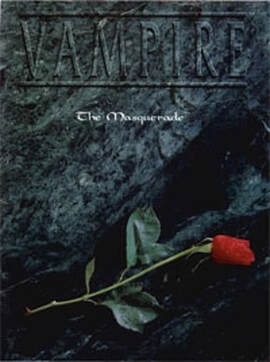
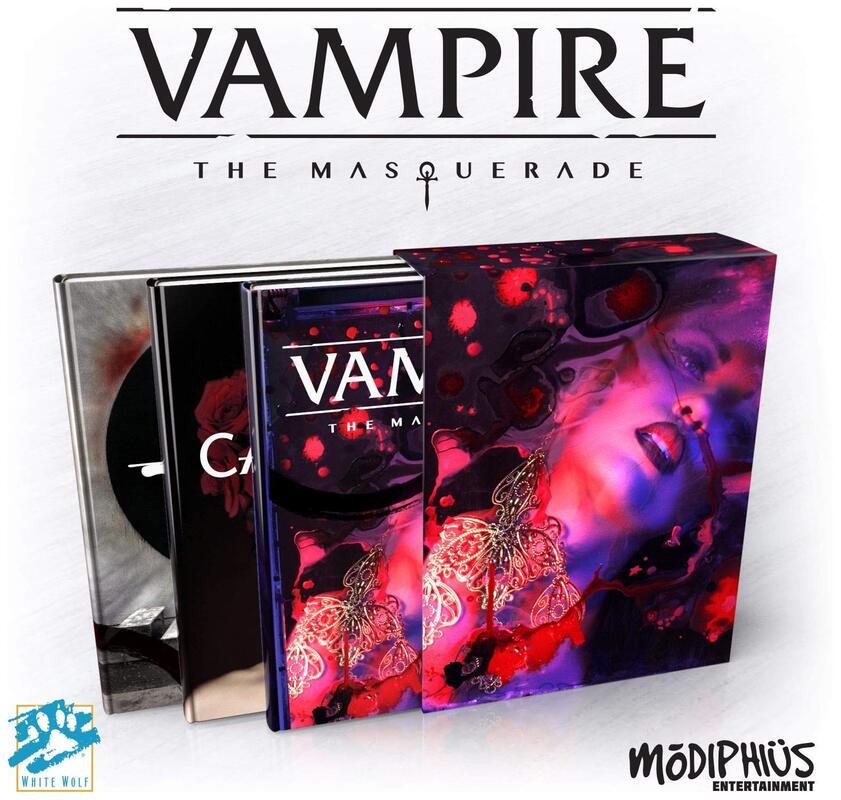
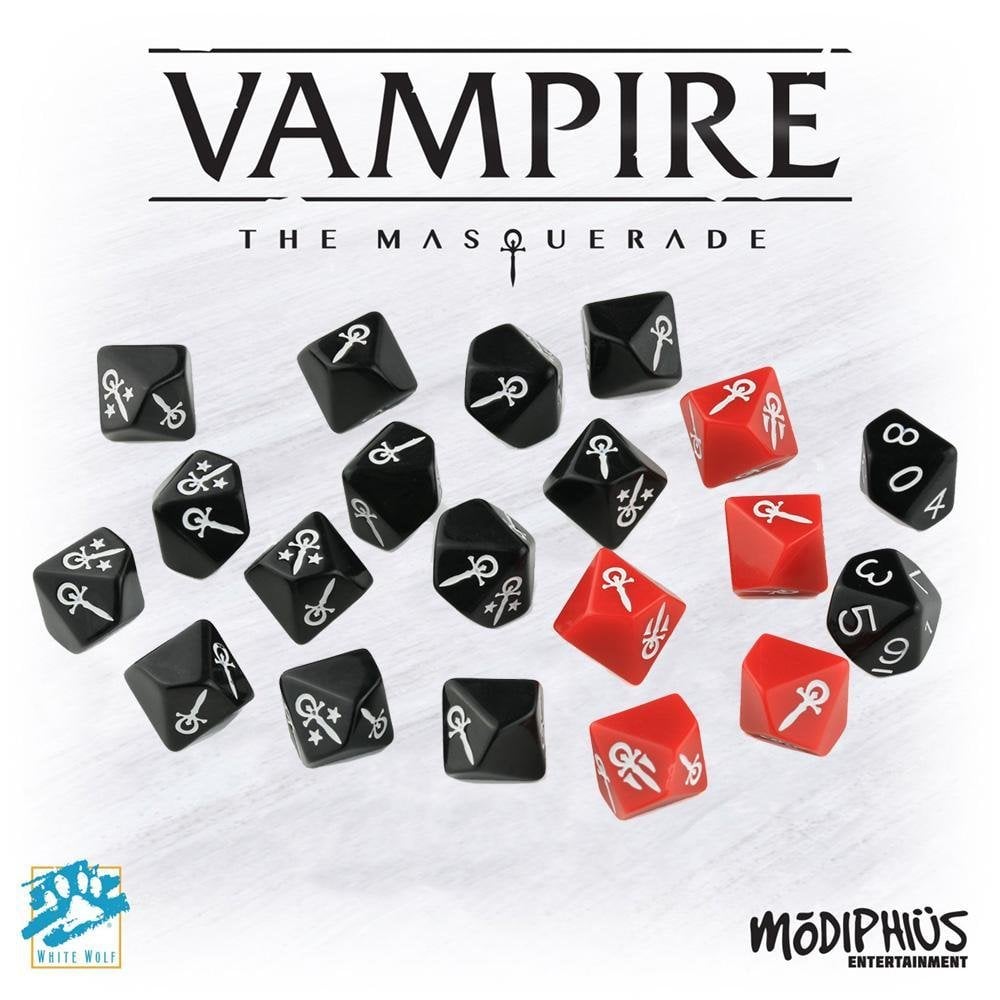
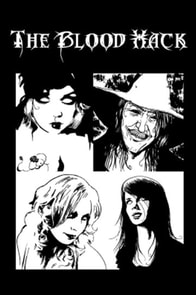
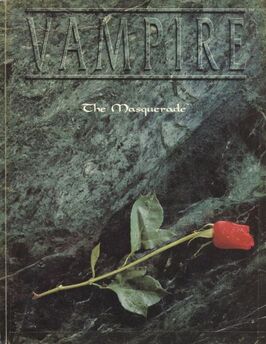
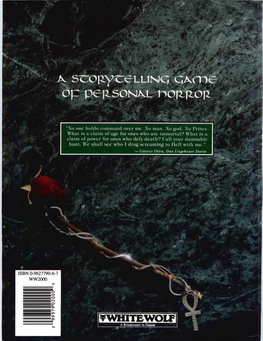
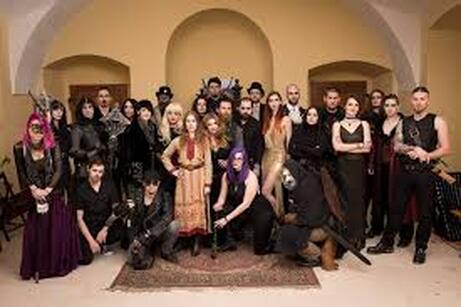
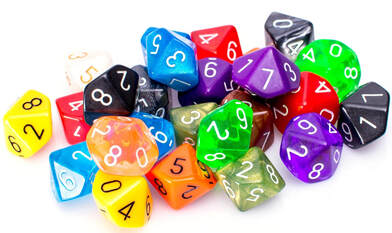
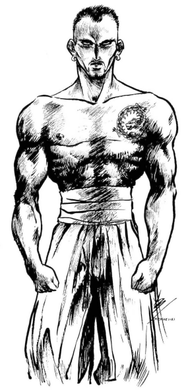
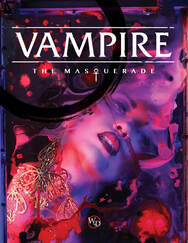
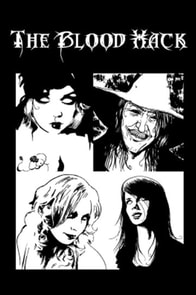
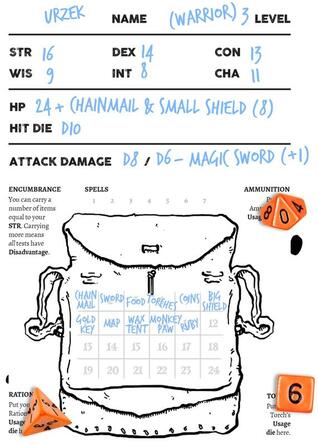
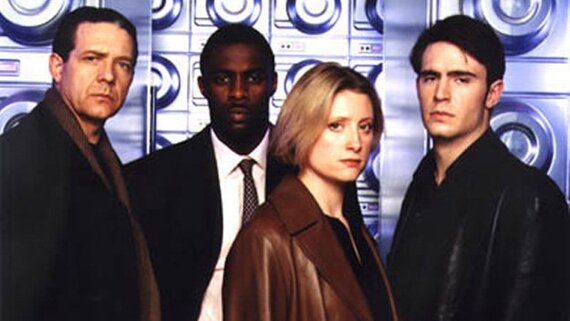
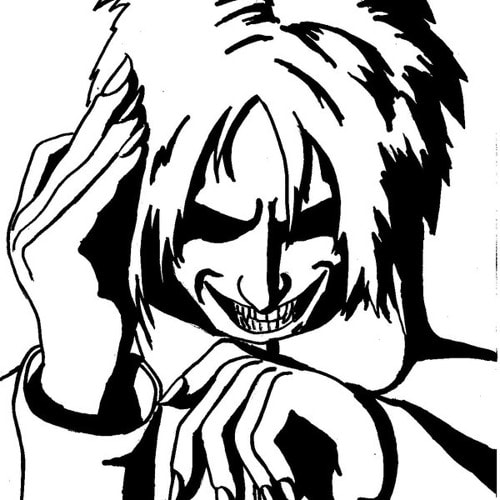
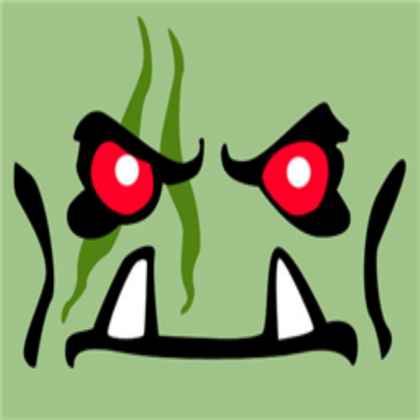
 RSS Feed
RSS Feed
